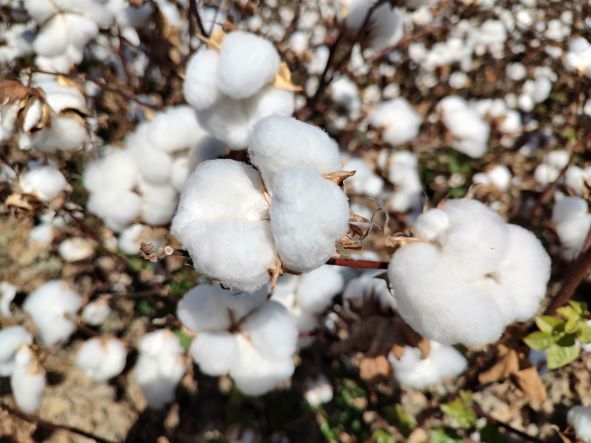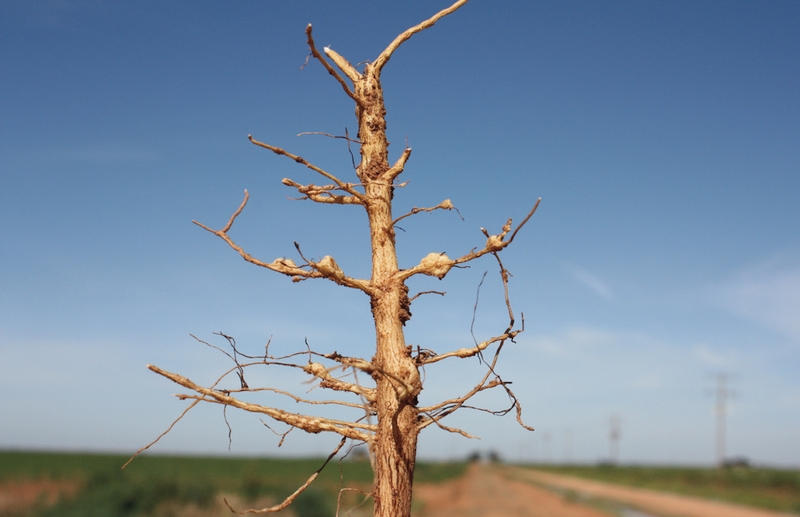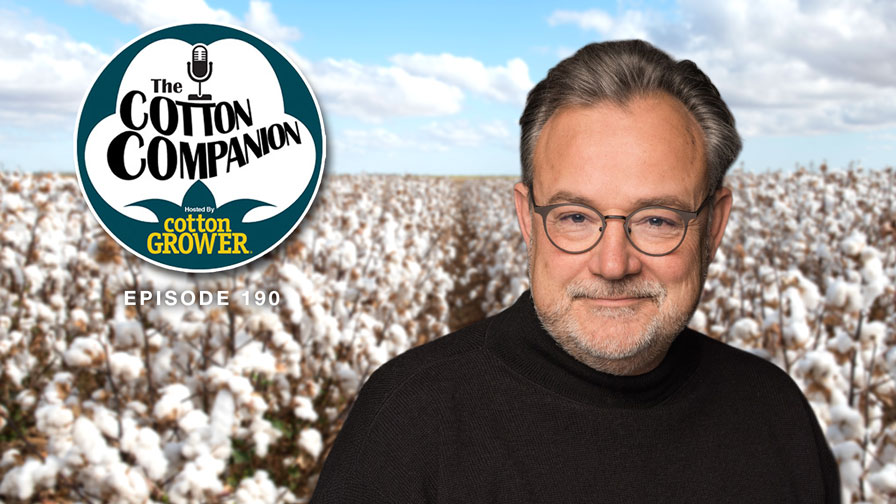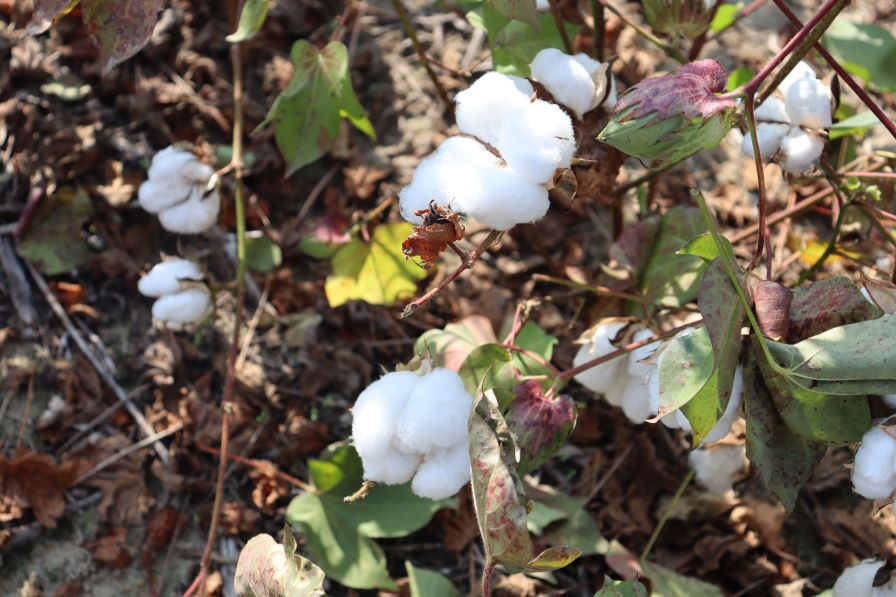Fate Sparrow Is 2024 Cotton Marketer of the Year
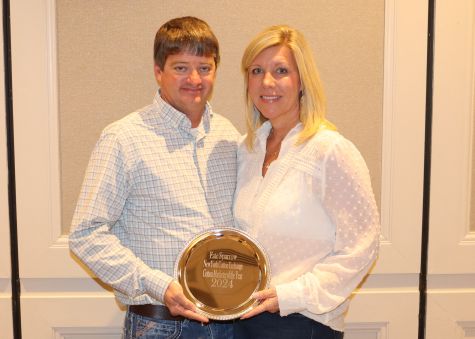 Fate and Lynn Sparrow (Photo: Jim Steadman)
Fate and Lynn Sparrow (Photo: Jim Steadman)
Fate Sparrow considers himself nothing more, nothing less than a Georgia farm kid. To hear him tell it, he’s a third-generation farmer that grew up on the family farm and stayed to help after he graduated from school.
“I’ve never done anything else besides farming,” he says. “I worked with my dad, Terry, every day until he decided to cut back. As the years went by, I just gradually took on more and more responsibility.”
That responsibility now includes 3,000 acres of cotton, 1,000 acres of peanuts, and roughly 200 head of Angus-Akaushi cattle — all in the heart of Dooly County, GA. With that also comes the responsibility of making it all pay off for him, his wife Lynn and sons Connor, Jackson, and Cole.
That, he admits, wasn’t always easy in 2024. But successfully navigating his crops and his costs through a difficult market year earned Sparrow the 2024 Joseph J. O’Neill Cotton Marketer of the Year Award, presented by BASF.
Surviving a Tough Year
“Last year, I probably had some of my best yields ever across the board,” notes Sparrow. “But I also lost the most money ever on row crops because prices are terrible, and inputs are extremely high. The cattle side, however, is doing wonderful. Things always seem to work out.”
Sparrow handles all of the farm’s marketing, relying on time-proven marketing options such as puts and calls. Sometimes the basics are simply the best way to go.
“The number one thing is you have to know your costs per acre,” he says. “Some farmers don’t know and some of them do. Then, if the market gets to where you can break even, you can lock those prices in and buy calls on top of it.
“I use that a lot, and not just with the row crops,” he adds. “I do it with my cows. I do it with diesel. And last year, that worked really well. I ended up getting almost a dollar a pound for all of my cotton.”
But even with that level of success, also comes a bit of regret.
“I slipped up a bit when cotton was priced in the 80s,” he admits. “I should have bought puts on top of that, and I just didn’t do it. I just kept saying everything’s too high, and it can’t go down. And then it did.
“I don’t know how anybody predicted this market,” he laughs.
Sparrow relies on multiple sources of marketing information and advice, specifically mentioning Dr. Don Shurley with the University of Georgia and Dr. O.A. Cleveland of Mississippi State University as two of his primary sources — although, as he says, they may respectfully disagree from time to time.
“We’re always watching the trends — the bears and bulls,” says Sparrow. “And there always seem to be more bears.”
One other source he relies on is his wife Lynn, who manages Creek Cotton Company — a local cotton gin of which Sparrow is a part owner.
“She has a degree in accounting, and she knows my numbers,” he says. “She watches the market closely and will let me know if the market’s doing something I should act on. She’s a huge part of everything I do.”
Tough Decisions Ahead
Moving into the 2025 growing season, there are still plenty of decisions to make. Sparrow admits that not all of them will be easy.
“Right now, the sentiment among farmers in my area is probably the worst I’ve ever seen,” he says. “Some are hanging it up this year, and farm auctions are already lined up. It’s sad. Others are dropping the lease on their less productive land, and I’m doing some of that as well. The land just did not justify the high rent and input costs.
“I’ve farmed 6,000 acres before, but that’s not what it’s about,” he points out. “Being bigger is not always better. It’s being able to manage and take care of what you have. My dad, who taught me everything I know, pushes me on that. He always said ‘Don’t pick up land just because it’s right there beside you. If it hasn’t been productive for somebody else, why would it be productive for you?’”
Sparrow is a big believer in diversification to help spread his risk.
“Right now, my cattle operation has had to cover my cotton and peanut losses from last year,” he says. “You have to be flexible. For example, almost everything follows corn. When corn’s cheap, cattle prices are good. When corn prices are good, it’s time to sell cattle. You have to pay attention and keep an eye on the trends.”
And yes, Sparrow has planted corn before and has done well with it. But the lack of grain infrastructure in a heavy cotton county often pushes corn down the list of priority crops — especially when the previously mentioned Creek Cotton Company is one of seven cotton gins in Dooly County alone.
“We gin about 35,000 bales a year, primarily from me, the other four owners, and a few other customers” he says. “This county is full of cotton people. It’s what we do, and we’ll figure out a way to manage through these challenging times.”




